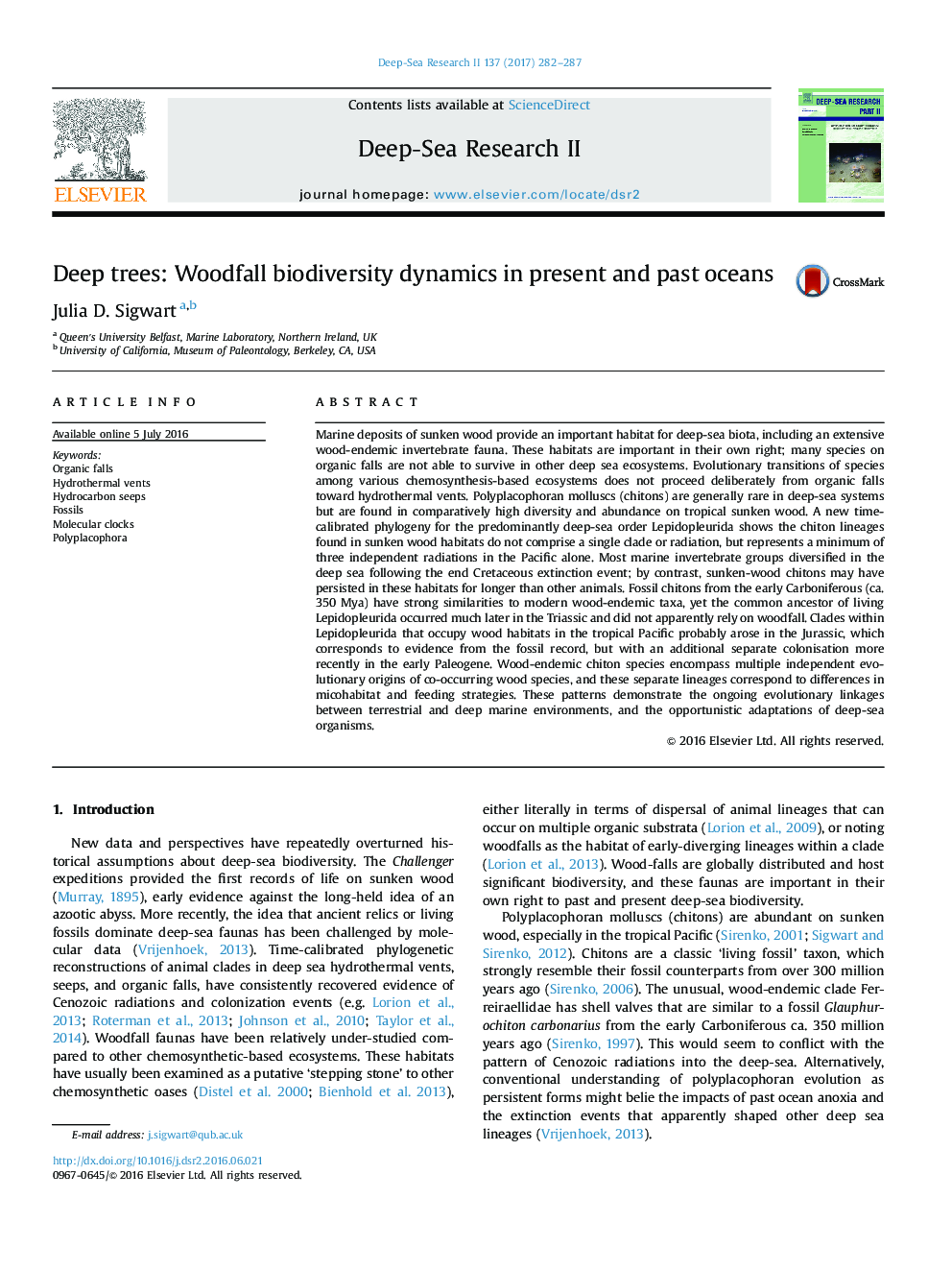| کد مقاله | کد نشریه | سال انتشار | مقاله انگلیسی | نسخه تمام متن |
|---|---|---|---|---|
| 5764834 | 1626405 | 2017 | 6 صفحه PDF | دانلود رایگان |

Marine deposits of sunken wood provide an important habitat for deep-sea biota, including an extensive wood-endemic invertebrate fauna. These habitats are important in their own right; many species on organic falls are not able to survive in other deep sea ecosystems. Evolutionary transitions of species among various chemosynthesis-based ecosystems does not proceed deliberately from organic falls toward hydrothermal vents. Polyplacophoran molluscs (chitons) are generally rare in deep-sea systems but are found in comparatively high diversity and abundance on tropical sunken wood. A new time-calibrated phylogeny for the predominantly deep-sea order Lepidopleurida shows the chiton lineages found in sunken wood habitats do not comprise a single clade or radiation, but represents a minimum of three independent radiations in the Pacific alone. Most marine invertebrate groups diversified in the deep sea following the end Cretaceous extinction event; by contrast, sunken-wood chitons may have persisted in these habitats for longer than other animals. Fossil chitons from the early Carboniferous (ca. 350 Mya) have strong similarities to modern wood-endemic taxa, yet the common ancestor of living Lepidopleurida occurred much later in the Triassic and did not apparently rely on woodfall. Clades within Lepidopleurida that occupy wood habitats in the tropical Pacific probably arose in the Jurassic, which corresponds to evidence from the fossil record, but with an additional separate colonisation more recently in the early Paleogene. Wood-endemic chiton species encompass multiple independent evolutionary origins of co-occurring wood species, and these separate lineages correspond to differences in micohabitat and feeding strategies. These patterns demonstrate the ongoing evolutionary linkages between terrestrial and deep marine environments, and the opportunistic adaptations of deep-sea organisms.
Journal: Deep Sea Research Part II: Topical Studies in Oceanography - Volume 137, March 2017, Pages 282-287